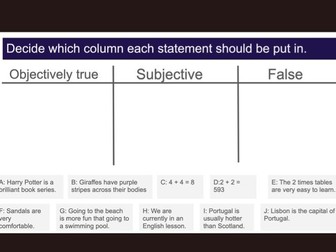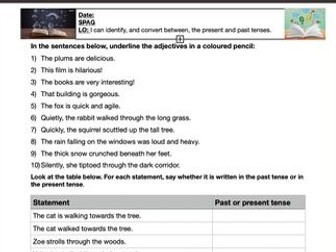KS2 KS3 literacy English reading comprehension close reading worksheet horror gothic inference
<p>These worksheets are designed to practice close reading skills. Each sheet has a very short (2-5 sentences) extract from a gothic horror story, followed by some simple comprehension (mainly recall and inference) questions that require close reading of the short extract. Ideal for Year 5, year 6, year 7, year 8.</p>
<p>The extracts use high-quality vocabulary and language, and would also be useful for demonstrating the use of similes, personification, withholding information from the reader, dramatic writing techniques etc.</p>
<p>The extracts come from a short young adult gothic horror(ish) story. They are NOT scary, but they hint at a darkness that the children in my very high-attaining year 5 class relished.</p>
<p>There are 4 sheets in all, but they could be condensed. I recommend doing all sheets together, as the children really enjoyed the building tension, the gradual revealing of the plot and the new mysteries that arose in each extract. You could also copy the extracts and questions onto a slideshow/smartboard, to read and answer the questions together as a whole class.</p>
<p>With my year 5 class, we read each extract together. We worked through the first set of questions as a class, to model how to approach the task. The children absolutely adored the extracts, and to this day they still beg me to tell them what happens at the end!</p>
<p>As a follow-up, the students BEGGED to write a continuation/prequel to the story. We spent a subsequent lesson considering ways of building tension and foreshadowing, and then wrote our own stories. They loved it! :)</p>





